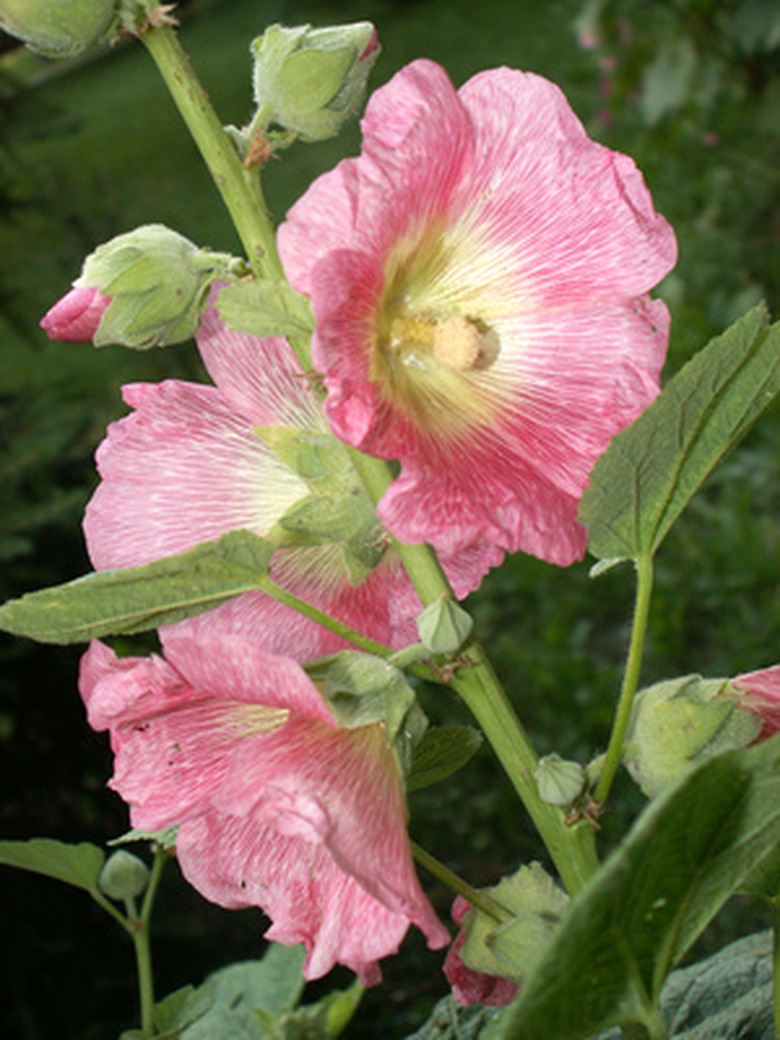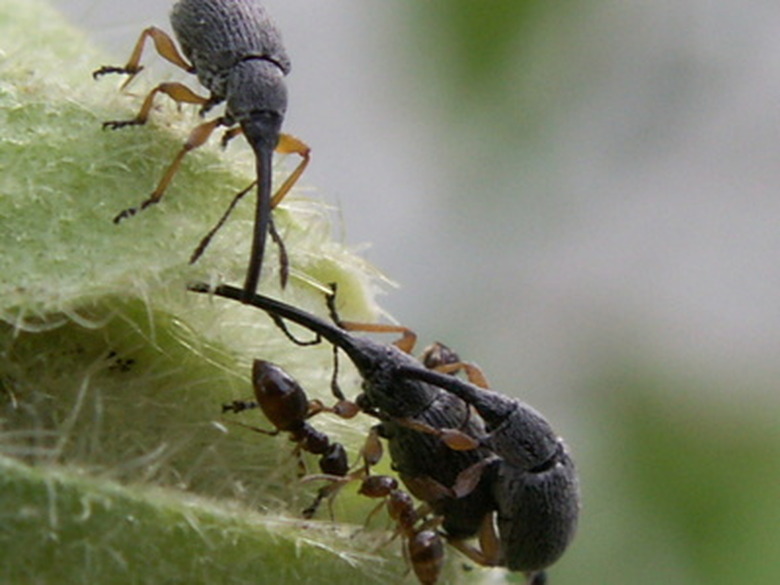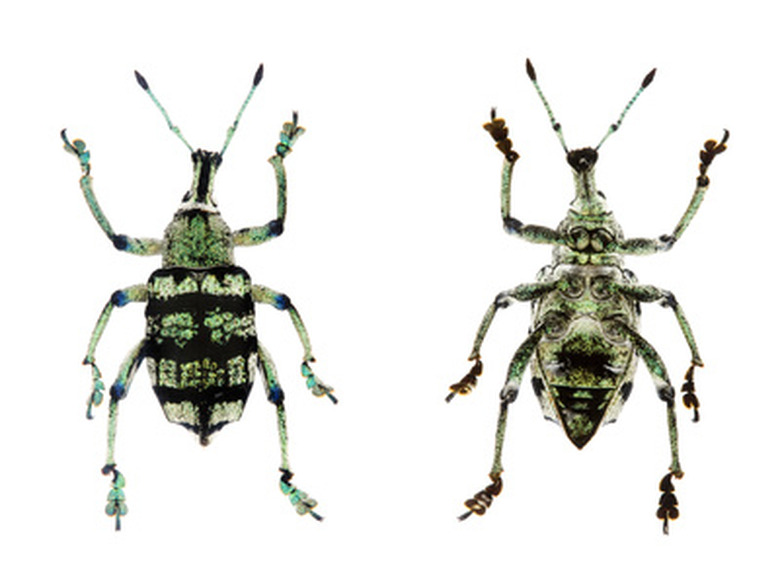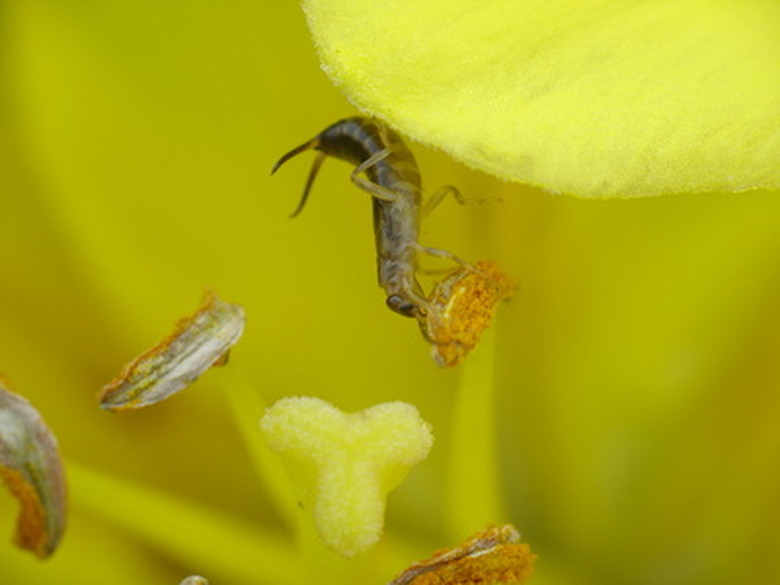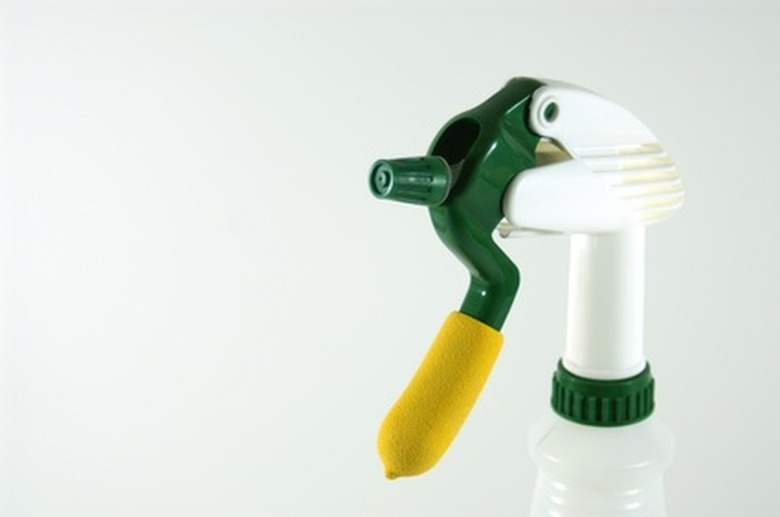What Is Eating My Hollyhocks?
The Hollyhock is a flowering species in the genus Alcea in the Malvaceae family. The stalk is an average of 3 1/2 meters tall and the flowers are generally pink or yellow, and the leaves are delicious to several types of insects.
Identification
Generally, if there is an insect infestation, it will present as "lacy" holes throughout the leaves of the plant. Fungal issues present more like a "dusting" over the leaves and sometimes flower petals if it is late spring/early summer. You might also find eggs inside the tissue of the leaf, or cocooned insects at the base of the plant.
Insects
While many insects find the leaves to be quite tasty, the two that are most common are the hollyhock weevil (Apion longisrostre), and the larvae of the sawfly. The hollyhock weevil looks a bit like the common tick; it measures about 1/8th of an inch and has relatively long legs and a snout. The weevil will typically stick to the flower petals on the plant, eating small holes from the inside out.
- The Hollyhock is a flowering species in the genus Alcea in the Malvaceae family.
- Generally, if there is an insect infestation, it will present as "lacy" holes throughout the leaves of the plant.
If your leaves are looking "lacy" then the most likely culprit is the sawfly larva. This larva is very similar to a caterpillar, but is in fact the larvae stage of the sawfly. While they change in color, they are typically green or yellow and about 1/2 inch long.
Fungus
Hollyhocks are susceptible to the fungus "rust" or Puccinia malvacearum. The tops of the leaves will begin to present with yellow spots, while the most obvious sign of hollyhock rust will be orange pustules on the underside of the leaves. This fungus will eventually send the leaves of the hollyhock to an early compost.
Theories/Speculation
There are some gardeners who believe the earwig is another likely leaf-muncher on the hollyhock. In fact, entomologists tell us that earwigs are really carnivorous insects, and are probably helping to thwart other insect problems in your garden by gobbling them up.
- If your leaves are looking "lacy" then the most likely culprit is the sawfly larva.
- The tops of the leaves will begin to present with yellow spots, while the most obvious sign of hollyhock rust will be orange pustules on the underside of the leaves.
Prevention/Solution
While there are many home remedies that typically involve olive oil with garlic and hot peppers, etc., the surest solution for the demise of the sawfly larvae and/or Hollyhock weevils is to use Sevin dust or BT insecticide. These products, might be dangerous for your animals or small children running around the garden. There are botanical "natural" products that work as insect repellent, but they can still cause skin, stomach and eye irritation in humans and dogs, so fence off the area around your hollyhocks to keep everyone safe.
